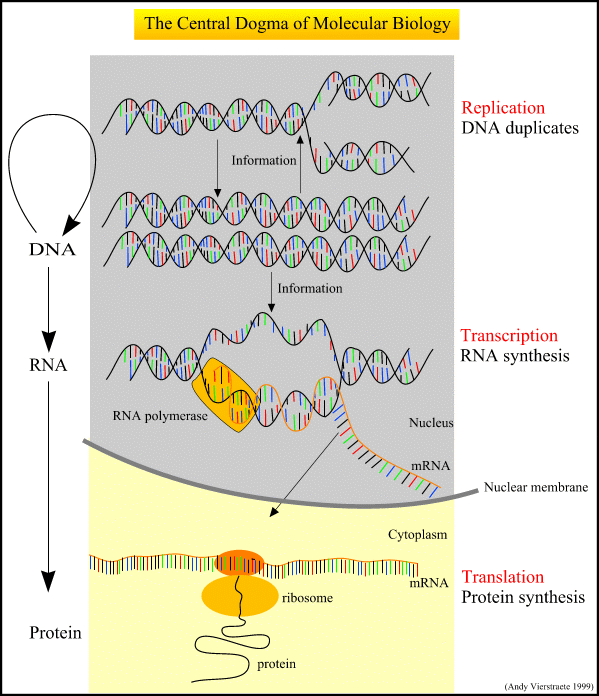(last update : 17-10-1999)
The Central Dogma of Molecular Biology
DNA contains the complete genetic information that defines the structure and function of an organism. Proteins are formed using the genetic code of the DNA. Three different processes are responsible for the inheritance of genetic information and for its conversion from one form to another :
- Replication : a double stranded nucleic acid is duplicated to give identical copies. This process perpetuates the genetic information.
- Transcription : a DNA segment that constitutes a gene is read and transcribed into a single stranded sequence of RNA. The RNA moves from the nucleus into the cytoplasm.
- Translation : the RNA sequence is translated into a sequence of amino acids as the protein is formed. During translation, the ribosome reads three bases (a codon) at a time from the RNA and translates them into one amino acid
In eucariotic cells, the second step (transcription) is necessary because the genetic material in the nucleus is physically separated from the site of protein synthesis in the cytoplasm in the cell. Therefore, it is not possible to translate DNA directly into protein, but an intermediary must be made to carry the information from one compartment to an other.

Figure 1 : The Central Dogma of molecular biology.
(pdf file of this picture)
back to homepage
